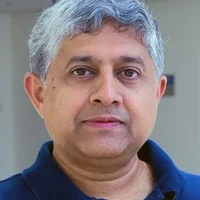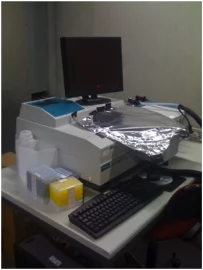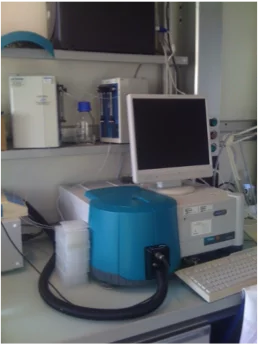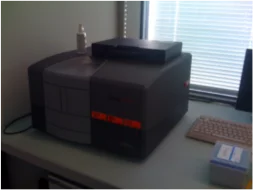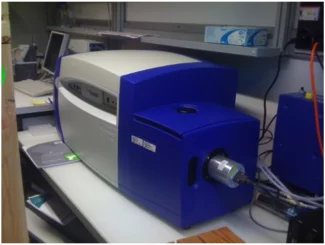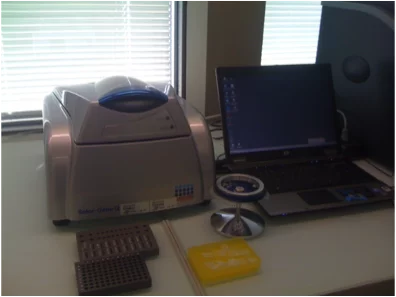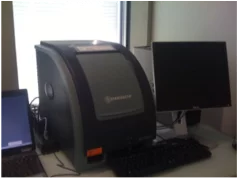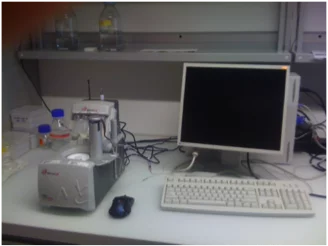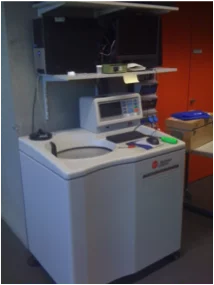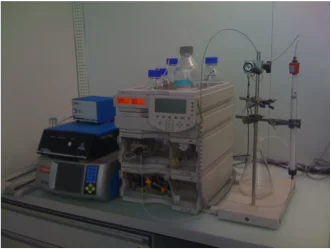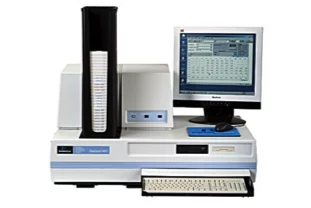BMR has extensive expertise in biophysical techniques used to characterise soluble as well as membrane proteins. Main questions concern protein stability, the size of proteins and their oligomeric state. We also study how the protein stability or the interactions within protein complexes are affected by sample conditions with the goal to optimise conditions for structural studies.
The facility is supervised by Dr. Jinghui Luo.
The facility is supervised by Dr. Jinghui Luo.
Absorbance spectrometers
Absorbance spectrometers are used to measure concentration of protein, DNA, probes and other chemical compounds, characterise the degree of label incorporation, as well as the functional state of visual pigments such as rhodopsin. We have several instruments for diverse applications.
Nanodrop ND-1000 is used measure protein and DNA concentration in small volume (1-2 uL), significantly reducing sample requirements. It is especially suited for concentrated samples.
Cary 50 allows accurate measurements of more dilute samples.
Cary 300 is equipped with thermostated multi-position cuvette holder and incorporated magnetic stirrers. This allows monitoring stability of several protein samples or enzymatic reactions in parallel.
Nanodrop ND-1000 is used measure protein and DNA concentration in small volume (1-2 uL), significantly reducing sample requirements. It is especially suited for concentrated samples.
Cary 50 allows accurate measurements of more dilute samples.
Cary 300 is equipped with thermostated multi-position cuvette holder and incorporated magnetic stirrers. This allows monitoring stability of several protein samples or enzymatic reactions in parallel.
Fluorescence spectrometers
Fluorescence spectroscopy is extensive used to characterise protein stability as well as protein-protein, protein–DNA or protein-ligand interactions.
Varian Eclipse is a modern ultrasensitive benchtop fluorimeter. It is equipped with motorised polarisers to record fluorescence anisotropy, a multi-position thermostated magnetically stirred cuvette holder and automated titrators to perform binding titration experiments. It is also equipped with thermocouples to monitor the temperature in the cuvettes during temperature ramping experiments.
Fluorescence Nanodrop ND-3300 allows recording fluorescence spectra from small volume samples (1-2 uL).
Plate reader Tecan UltraEvolution - this plate reader combines absorbance and several fluorescence detection modes such as fluorescence intensity, fluorescence anisotropy and time-resolved fluorescence with ability to read 96 and 384 well plates.
Varian Eclipse is a modern ultrasensitive benchtop fluorimeter. It is equipped with motorised polarisers to record fluorescence anisotropy, a multi-position thermostated magnetically stirred cuvette holder and automated titrators to perform binding titration experiments. It is also equipped with thermocouples to monitor the temperature in the cuvettes during temperature ramping experiments.
Fluorescence Nanodrop ND-3300 allows recording fluorescence spectra from small volume samples (1-2 uL).
Plate reader Tecan UltraEvolution - this plate reader combines absorbance and several fluorescence detection modes such as fluorescence intensity, fluorescence anisotropy and time-resolved fluorescence with ability to read 96 and 384 well plates.
Circular dichroism spectroscopy
Circular Dichroism (CD) spectroscopy allows evaluation of the secondary structure of proteins as well as their stability. Chirascan™-plus CD Spectrometer by Applied Photophysics (http://www.photophysics.com/products/chirascan-plus-cd-spectrometer) combines modern sensitive CD instrument with fluorescence spectrometer, adding an extra dimension to protein stability characterisation.
High-throughput protein stability measurements using qPCR instrumentation
Fluorescence based assays to measure protein stability using environmentally sensitive fluorescence probes such as SYPRO Orange or CPM allows increased throughput and reduced sample requirements by using qPCT thermocycler. The RotorGene 6-plex instrument (Qiagen) allows very accurate measurements of protein stability due to its centrifugal design resulting in exceptional temperature uniformity among the samples, while the Stratagene Mx-3005p is compatible with standard 96 well formats.
Isothermal Titration Calorimetry
Isothermal Titration Calorimetry is used to quantify the strength of biological interactions by measuring the heat released or absorbed upon binding. ITC-200 (http://www.microcal.com/products/itc/itc200.asp) is the latest instrument from Microcal. It is more sensitive and uses less material then its predecessors.
Analytical ultracentrifugation
Analytical ultracentrifugation (AUC) is a powerful biophysical technique to study the sedimentation of particles in the centrifugal field. It is extensively used for the characterization of protein-protein interactions and oligomerisation states of biological molecules in solution. Our Beckman ProteomLab XL-I centrifuge is equipped with the fluorescence detection system produced by Aviv Biomedical (http://www.avivbiomedical.com/) which dramatically increases the sensitivity and the specificity of the analytical ultracentrifuge, allowing analysis of much more diluted samples as well as more complex interacting systems.
MALS
Multi Angle Light Scattering (or MALLS for Multi Angle Laser Light Scattering) is a technic used to determine the absolute mass of particles in solution by measuring the intensity of scattered light combined with measurements of concentration by absorbance spectroscopy and changes in the refraction index of the sample. It allows us to determine the oligomeric state of the proteins and the stoichiometry of protein complexes as well as to characterise specificity or affinity for ligands. In case of membrane proteins in addition of their size we can also determine the size of the micelle. We use gel filtration to separate oligomerisation states present in the sample on an Agilent HPLC system coupled to a TriStar MiniDawn light scattering detector and an Optilab Rex refractometer from Wyatt Technology Corporation.
Scintillation counter.
Radioligand binding and G protein activation assays are the standard in measuring activity of G protein coupled receptors (GPCRs) allowing unprecedented sensitivity as well as ability to work with cells, cell lysates, membrane fractions and solubilised receptors. We have TopCount NXT microplate reader from Packard Bioscience.
